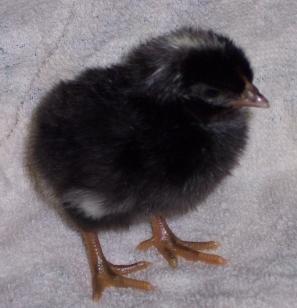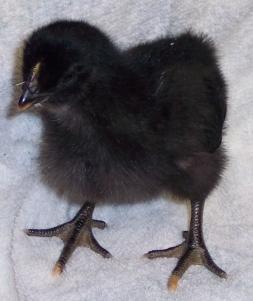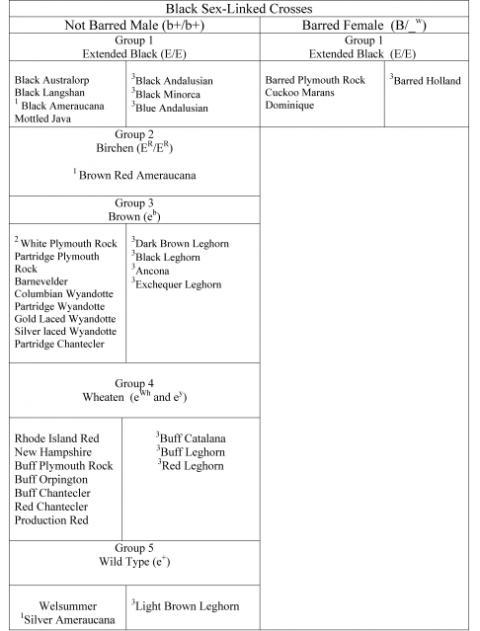Black Sex-linked
There are two important genes that must be a part of a black sex-linked cross; the E locus allele called extended black (E) and the sex-linked barring gene (B). The Barred Plymouth rock carries both E and B and both genes are used as the female side in commercial black sex linked crosses while the male side of the cross is a Rhode Island Red or a New Hampshire. Birchen birds at times can be used in black sex linked crosses. It is best to leave the use of birchen birds to individuals that have tested the birds for the correct genotype. If birchen birds do not have the correct genotype, the offspring will not be black sex linked.
A few specifics to remember about a black sex-linked cross are:
1) the female must carry sex-linked barring (barred),
2) the male can not carry sex-linked barring (male can not be barred),
3) one of the birds must be homozygous for extended black or carry two extended black genes and
4) neither of the birds can carry dominant white or in other words be a white bird. Some recessive white birds may work on the male side of the cross but you never know if it will work or not work. So I suggest not using white birds.
5). Almost any variety (color) of male ( not including white or barred ) can be used in a black sex linked cross. White birds sometimes carry dominant white and or barring which would not work in a black sex linked cross. White males that do not carry dominant white or barring will work as the male in a black sex linked cross. White males like the white wyandotte or the white plymouth rock will work if they do not carry dominant white or barring.
In a black sex-linked cross, the female will only contribute the barring gene to the male offspring. So the adult males will be black and barred. The female offspring will receive their sex linked trait from the father; in this case, the recessive gene for
no barring. So the females will not be barred as adults.
It is also important that the chick down has a black dorsal surface, back and top of the head; this allows for the barring gene to be expressed as a
white or cream spot on top of the male chicks head. See Illustration 5. This is why a white bird that carries
dominant white can not be used to produce black sex linked chicks. The top of the head would be white and the white spot will not show. Males that carry barring can not be used because the males will produce females chicks with white spots on their heads.
The top of a female chicks head will be a
solid black color. See Illustration 6. The chicks in the pictures do not have a white belly like many other black sex linked chicks.
Illustration 5 male black sex-link Illustration 6 female black sex-link
Examples of breeds that can be used for black sex linked crosses.
1 Male carries the blue egg shell gene.
2 Not a good choice may carry barring.
3. Carry the genes for white egg shell.


















